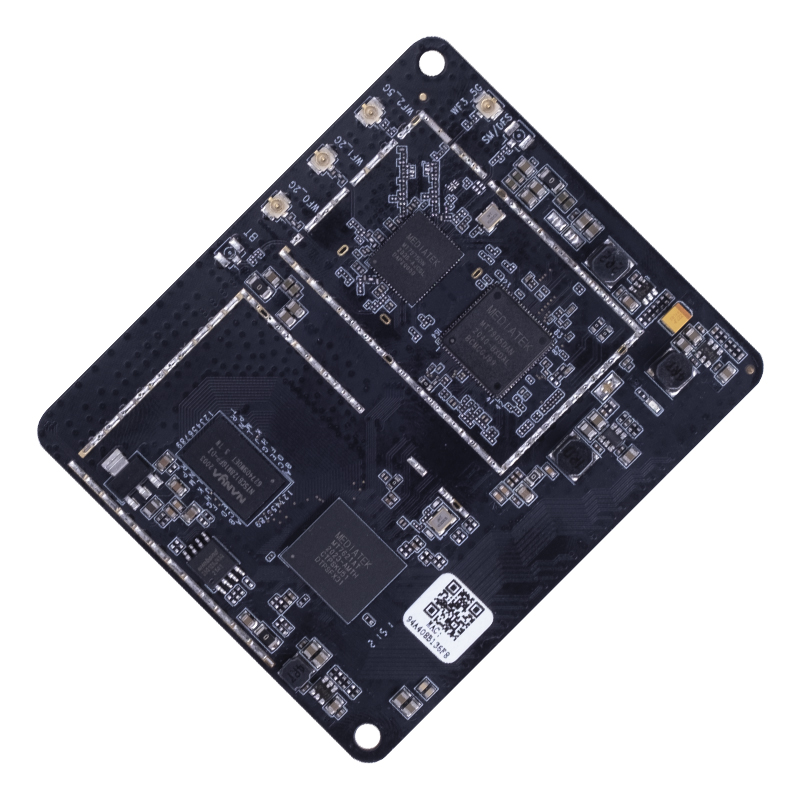In the realm of wireless communication, WiFi modules play a pivotal role in connecting devices to local area networks and the internet without the constraints of physical cables. Two common frequency bands utilized by WiFi modules are 2.4 GHz and 5 GHz, each offering distinct advantages and trade-offs. This article delves into the key differences between 2.4 GHz and 5 GHz WiFi modules and their implications for various applications.

Frequency Bands:
The primary distinction between 2.4 GHz and 5 GHz WiFi modules lies in the frequency bands they operate in. The 2.4 GHz band is a widely used spectrum that provides better signal propagation through obstacles and offers longer range coverage. On the other hand, the 5 GHz band is characterized by higher data rates and reduced susceptibility to interference.
Data Rates:
One of the notable differences is the data transfer rates each band can achieve. The 5 GHz band, owing to its wider channel availability and reduced interference, supports higher data rates compared to the 2.4 GHz band. This makes 5 GHz modules suitable for applications requiring faster and more reliable data transmission, such as high-definition video streaming and online gaming.
Interference and Congestion:
The 2.4 GHz band is more prone to interference due to its popularity and the presence of various non-WiFi devices operating in the same spectrum, including microwave ovens and Bluetooth devices. This congestion can lead to slower data speeds and less reliable connections in environments with numerous WiFi networks. Conversely, the 5 GHz band is less crowded, resulting in reduced interference and better performance in densely populated areas.
Range and Penetration:
While the 2.4 GHz band provides better range coverage, it comes at the cost of reduced penetration through obstacles like walls and buildings. In contrast, the 5 GHz band has a shorter effective range but can penetrate obstacles more effectively. The choice between the two depends on the specific requirements of the application and the physical environment in which the WiFi module will operate.
Compatibility:
Most modern WiFi devices and modules are designed to operate in both 2.4 GHz and 5 GHz bands, offering users the flexibility to choose the band that best suits their needs. Dual-band modules provide the advantages of both bands, allowing for optimal performance in different scenarios.
Device Compatibility:
It's important to consider the compatibility of devices that will connect to the WiFi network. While newer devices support both 2.4 GHz and 5 GHz bands, older devices may only be compatible with the 2.4 GHz band. Ensuring compatibility with a diverse range of devices is crucial when selecting a WiFi module for a specific application.
In summary, the choice between 2.4 GHz and 5 GHz WiFi modules depends on the specific requirements of the application, considering factors such as data transfer rates, range, interference, and device compatibility. Understanding the key differences between these frequency bands empowers developers, engineers, and users to make informed decisions when deploying WiFi-enabled devices in various environments. As technology continues to evolve, the landscape of wireless communication will undoubtedly see further advancements, shaping the future of WiFi modules and their capabilities.
 Trolink Joint With Tuya to Make Iot Benefit Every Family
Trolink Joint With Tuya to Make Iot Benefit Every Family
 5 Key Indicators for WiFi Module Selection You Have to Know !
5 Key Indicators for WiFi Module Selection You Have to Know !
 IOT module is the brain of smart products
IOT module is the brain of smart products
 What is the signal coverage range of the WiFi module chip?
What is the signal coverage range of the WiFi module chip?